Market Cap: $266b
24H Vol: $136b
btc dominance: 62.39%
- Nov 22, 2024
Learn what bitcoin mining is, how Bitcoin mining pools are an integral part of the mining activity, as well as a look at the best bitcoin mining pools of 2018.

Cryptocurrencies as a concept have been around for less than a decade. However, over the years - they have brought about a major change in the way we view the sectors of finance, technology and even economics. With the rise in cryptocurrencies, there has also been a rise in cryptocurrency mining activities. Over the course of this guide, we will take a quick look at what bitcoin mining is - and how Bitcoin mining pools are an integral part of the mining activity, as well as a look at the best bitcoin mining pools of 2018.
To understand Bitcoin, what Bitcoin mining pools are and how they function, it is critical to first understand what cryptocurrency mining is and how it function. Here’s a quick look at Bitcoin Mining:
Bitcoins, as we know, are digital currencies which are traded over the blockchain network. Bitcoin mining is basically the process by which new Bitcoins are generated. The mining process involves using computational power to solve complex mathematical algorithms which would solve a block on the blockchain. Solving a block requires a high amount of computational power, which means a high amount of processing and electricity consumption is required for mining. As a reward for their mining activities, miners get ‘block rewards’, which at present consist of 12.5 Bitcoins.
However, when we say ‘high amount of computational power’, it is very hard for an individual to generate so much processing power that could mine a block alone. While it is not impossible - but it would take a really long time. If a group of individuals chooses to work together, however, resulting in them pooling-in their resources - this is where the concept of a bitcoin mining pool kicks in.
As we stated above, mining for Bitcoins is a process which requires a lot of efforts and investments on the part of an individual. A single ASIC device, which is used to mine for Bitcoins could cost as many as several thousand dollars - moreover, if you are in a country where import duties are high, you might even be charged almost twice that amount. Mining is an expensive affair, no doubts there. This is only the cost of the device and the actual mining process will also involve the cost of electricity and maintenance among other costs.
In order to run a mining operation by yourself and gain regular and significant profits you would require multiple bitcoin mining ASIC devices. However, if you do not want to invest so much in buying multiple devices, you can buy a minimum of one ASIC miner and start mining for Bitcoins by joining a Bitcoin mining pool.
A Bitcoin mining pool is basically the coming together of a large number of users who pool-in their processing power to mine for cryptocurrencies and then share the rewards based on their individual contributions. The most important statistic in mining cryptocurrencies is that of the hashing power. The higher your hashing power (or that of your pool), the faster would you be able to mine for cryptocurrencies.
Another factor at play here is that of ‘mining difficulty’. The Bitcoin mining algorithm is such that the difficulty of mining keeps increasing on a regular and periodic basis. This is why there is a constant inflow of more powerful ASIC miners every few months. The higher the mining difficulty, the more hashing power it requires to mine for Bitcoin rewards. Hence it becomes harder with every passing day for solo Bitcoin miners to mine for currencies alone. Today, it is more important than ever before to join a mining pool.
Most Bitcoin mining pools charge a small fee when it comes to joining the network. This is a variable factor in all pools and some may not even charge a fee. In most cases the fees varies between 0 to 3%, this fees is used as a maintenance charge to keep the pool up and running and is used for the benefit of the members of the pool itself. Another thing that one must keep in mind before joining a Bitcoin mining pool is how the pool pays you. We deal with this topic at length in the section titled ‘How Bitcoin Mining Pools Pay Rewards’ below.
There are a number of benefits when it comes to joining a Bitcoin mining pool. Here’s a look at some of them:
Faster Mining:
One of the biggest benefits of mining for Bitcoins in a pool is that you mine faster. Regardless of how hard the mining difficulty is, a pool of sufficient size will ensure that you are able to mine frequently and get rewards on a regular basis.
Frequent Payouts:
Another benefit when it comes to joining a mining pool vs mining solo is that your payouts are much more frequent. While you get a larger reward when you mine alone, that reward can take a much longer time compared to mining in a pool where you get smaller rewards on a frequent basis.
Tackles Mining Difficulty Problem:
This is a salient benefit of mining Bitcoins via a Bitcoin mining pool - Considering that Bitcoin mining is a process which is entirely based on an algorithm, the ‘mining difficulty’ keeps increasing in fixed intervals of time. Mining alone would make it increasingly harder as well as more expensive, while the difficulty is divided among members in a pool - making it easier.
Comparatively Inexpensive Than Solo Mining:
n obvious benefit of joining Bitcoin mining pools - it is comparatively inexpensive when compared to solo mining. Solo mining would require you to use multiple ASIC devices and mine for a longer period of time to get the same reward that you would get faster in a pool. Hence, joining Bitcoin mining pools makes it comparatively inexpensive than mining for bitcoins alone.
Now that you understand what Bitcoin mining is and how it functions, as well as the importance of Bitcoin mining pools, let us take a closer look at some of the best Bitcoin mining pools of 2018:
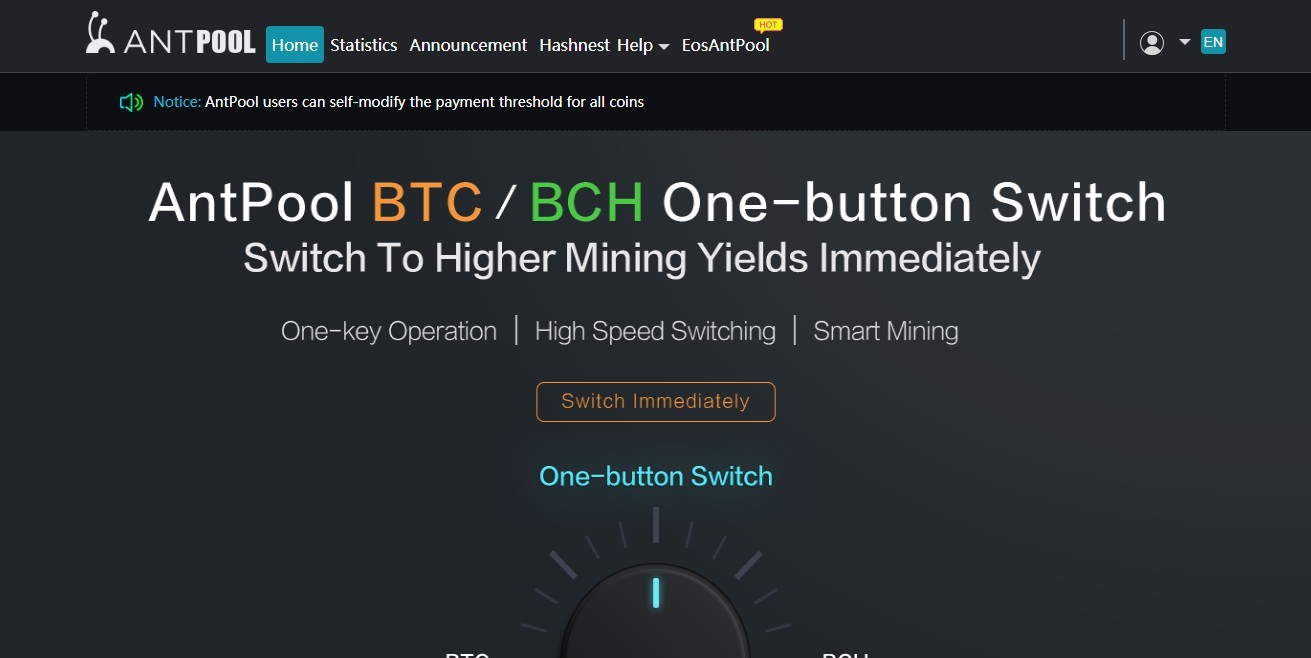
The biggest name when it comes to cryptocurrency mining pools, AntPool has been around for quite some time - and has the unique advantage of being owned by Bitmain. Bitmain, for those who may not be aware, is the company behind Antminer cryptocurrency miners - which occupies a market share of over 80% when it comes to cryptocurrency mining hardware. It is the largest pool with the highest network hash rate.
Coins Supported: BTC, BCH, ETH, ETC, LTC, ZEC, DASH, XMC, SC, BTM
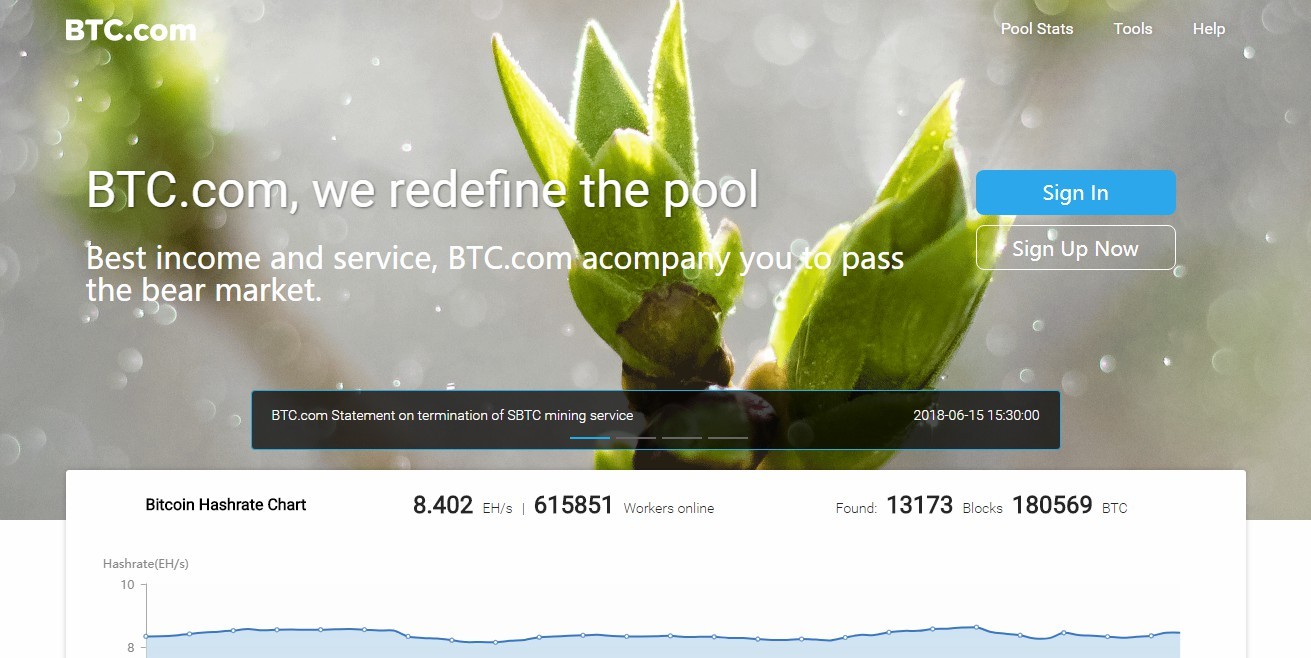
Another major player when it comes to the best Bitcoin mining pools, BTC.com is a public pool which can be joined by anyone. It provides regular and high payouts and uses the Full Pay-Per-Share (FPPS) method of paying rewards, which is slightly higher than a regular PPS method. (Methods explained below)
Coins Supported: BTC and BCH
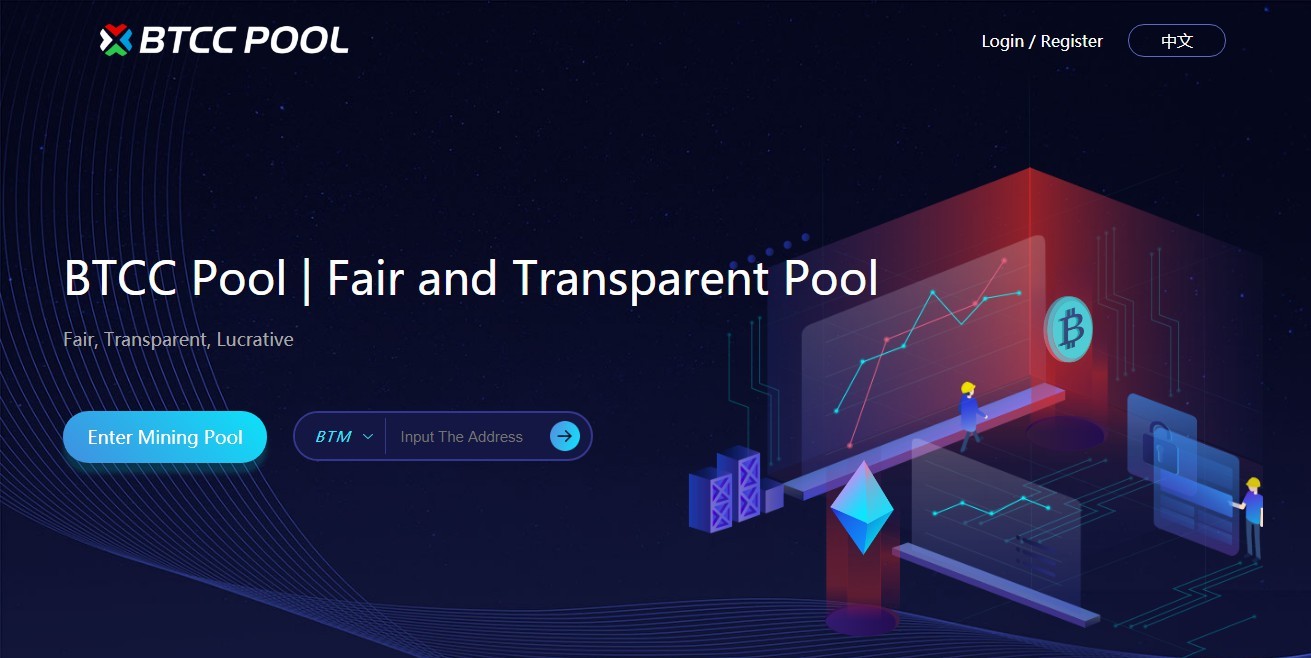
BTCC, earlier known as BTC China - has undergone a major change over the past few months. The pool is another major, dominating name when it comes to Bitcoin mining and has been hailed as one of the best Bitcoin mining pools of 2018. As per recent reports, BTCC plans to sell off 49% of their equity in the mining pool business to a Hong-Kong based asset management firm.
Coins Supported: BTC, BCH, LTC, SBTC, BCD and BTM
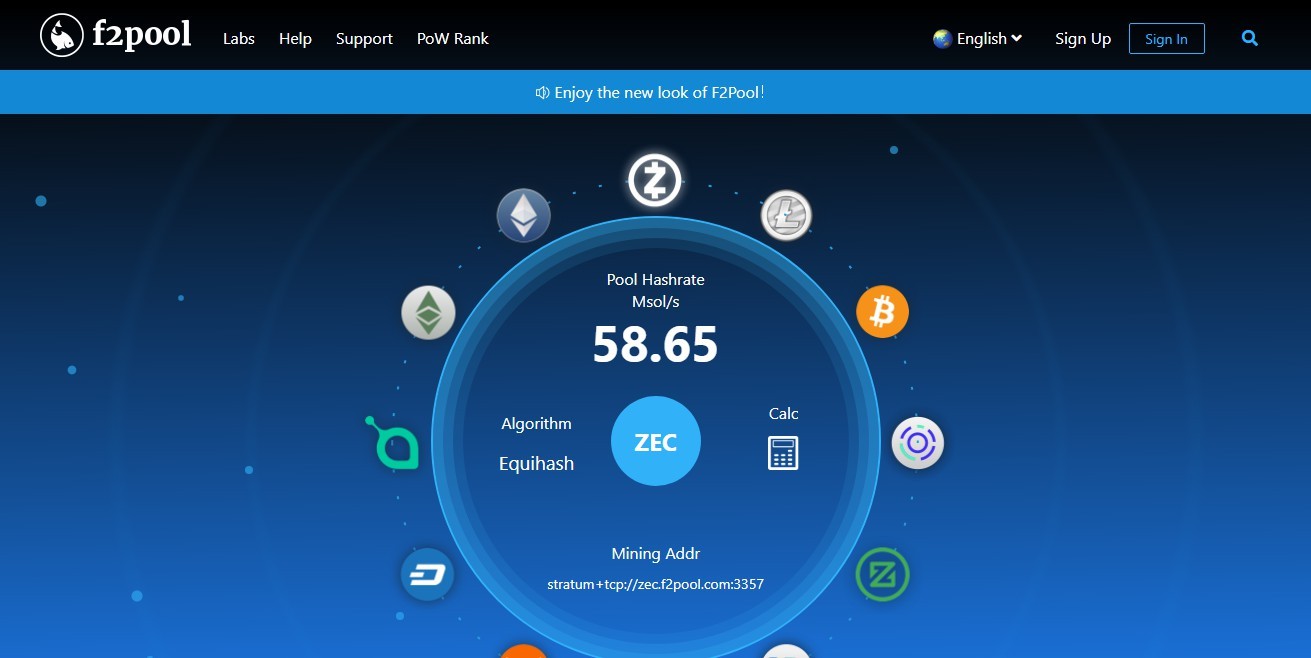
One of the best Bitcoin mining pools, F2Pool has been around for some time now. The pool supports a large number of cryptocurrencies and boasts of excellent security which ensures they are constantly up and running. It is an active pool that continues to grow every day and has a comfortable User Interface as well.
Coins Supported: BTC, ETH, ETC, LTC, ZEC, AION, XZC, DCR, XMC, XMR, DASH, SC
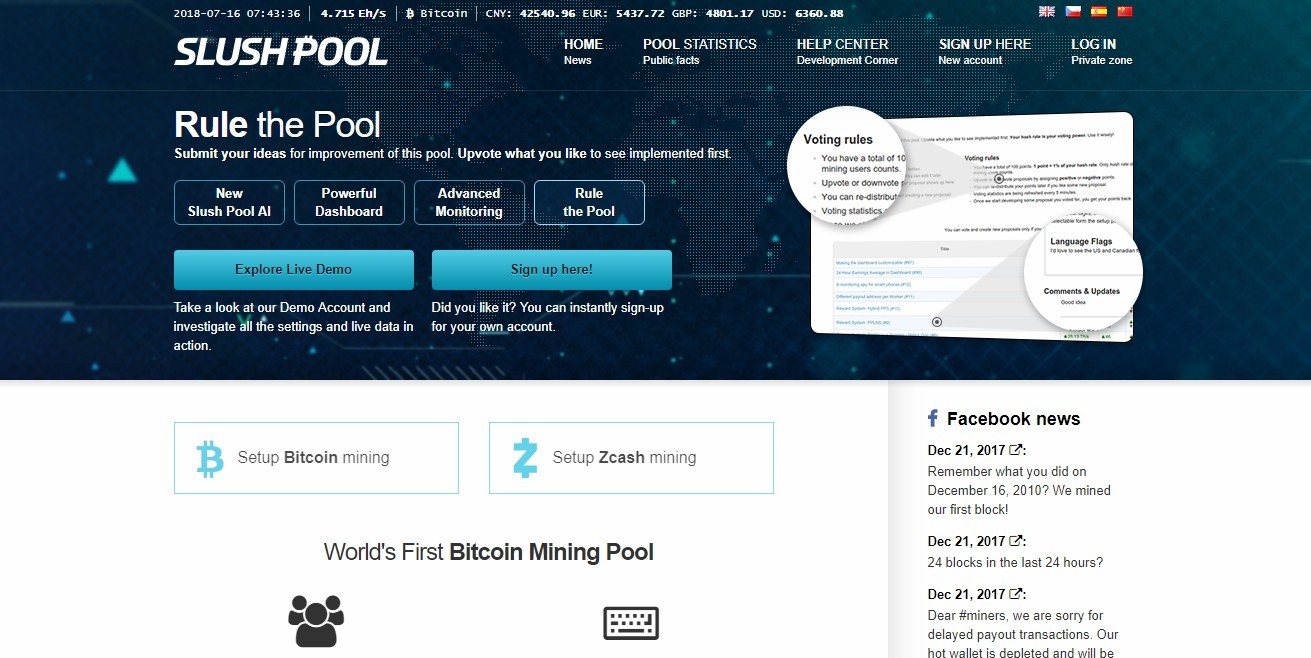
The first ever bitcoin mining pool to start off in December 2010, Slush continues to be in operation even today. While it is no longer the largest cryptocurrency mining pools, it is still a great option for those looking forward to become a part of the best bitcoin mining pools of 2018. It continues to be a great option for beginners and offers a simple and easy to use UI. It makes use of a smart, AI-based system and also offers a free demo for users.
Coins Supported: BTC and ZEC
Also Read: Best Bitcoin Cloud Mining Platforms
Now that you know the best Bitcoin mining pools, here’s a look at the various ways in which pools tend to pay mining rewards. You can choose the best Bitcoin mining pool that suits your needs based on the way they pay rewards. You must also keep in mind two more things: some pools tend to charge an additional ‘maintenance fees’ which can vary between 0-3%. The second thing that must be noted is that some pools tend to have hidden charges which you will only realize when you start mining with them - so be on the lookout!
Let us now take a look at the different ways in which Bitcoin Mining Pools pay rewards:
In some Bitcoin mining pools, the users are paid based on the proportion of shares which have been found by them. The more shares a user finds, the higher payment he gets. To understand this in simpler terms, in a proportional payment system, the more powerful your mining rig is, the more you earn.
In this kind of a payment system, each share is rewarded on multiple rounds. This usually tends to pay more than any other method of payment. Most of this method is similar to the Proportional Payments method, but the biggest difference here is that payments are made on the basis of the last N shares.
This is a very common and popular method of payments in Bitcoin Mining Pools. In this method, a user is paid a fixed amount every time a share is submitted. The more shares a miner submits, the higher his payments would be. However, one major drawback of this system is that this leads to a higher pool fees - which is deducted from the final payments.
In this method of Bitcoin mining pool reward payments, a standard fee is calculated and added to the block rewards. The basic difference between FPPS and PPS is that in FPPS, the pool fees is slightly lesser compared to regular PPS.
Under this kind of a method of payments, the pool operator receives a percentage of the payments during short rounds but returns them back to the miners during longer rounds.
Let us now take a look at some of the most popularly asked questions when it comes to Bitcoin Mining Pools:
How do I connect my wallet to a mining pool?
Simply speaking, there is no need to connect wallet to a pool, but there is a strong need to connect the pool to a wallet. This means that you do not have to do anything in your wallet, but you need to enter your wallet address in the mining pool. The pool will prompt you for a wallet address at the time you are signing up.
Make sure you are giving the appropriate wallet address by double checking the digits. Moreover, ensure that the address you are giving is of the right cryptocurrency as BTC payments will be lost forever if sent to an ETH wallet address.
In proof-of-stake mining, is pooling possible?
Proof of Stake (POS) Mining is changing the way we know cryptocurrency mining to be. It is reducing the load from the blockchain networks and making transactions faster and cheaper. Currencies such as Ethereum are slowly migrating to this POS method of mining. However, when it comes to POS mining, the pooling system is a little different.
In POS Mining, you do not need a larger hashing power, but you need a larger stake. The more stake you have in the currency, the more you can mine. The best option here would be to join a staking pool, where people stake their holdings and distribute their rewards proportionately. This is a fairly recent development but expect these kind of pools to boom once Ethereum fully moves to a Proof-of-Stake based system.
What is needed to join a mining pool?
In order to join a public mining pool, you just need some basic things:
- Appropriate mining devices
- A cryptocurrency wallet where rewards will be deposited
Some pools will also ask for personal identification details, which you need to provide them in order to join that mining pool. There are some mining pools which are meant for exclusive members - who are mining using a single kind of a mining hardware. These are private/exclusive pools. However, in order to join a regular, public mining pool - all you need is a wallet and a mining device.
There are many who still believe that they can mine for cryptocurrencies solo, even in 2018. While this may be true for some cryptocurrencies which are not as popular or difficult to mine, it is certainly not the case when it comes to Bitcoin mining. In today’s times, Bitcoin mining is certainly not for a solo miner. It requires a large amount of hashing power - which requires a huge amount of investment. Those mining for Bitcoins solo can go for a long period without any rewards.
There’s also a confusion amid many on what kind of a pool they should join. Should they go with a big pool with a large number of people where they get frequent but small rewards or should they join a moderately sized pool where the rewards are less frequent but larger. However, this is a question that every miner needs to ask themselves and determine which model they prefer.
Bitcoin mining pools have become an absolute necessity and it is quite critical to join a mining pool if you plan to mine for Bitcoins. We hope this list of the Best Bitcoin mining pools of 2018 helped you make a better decision when it comes to selecting a Bitcoin mining pool.